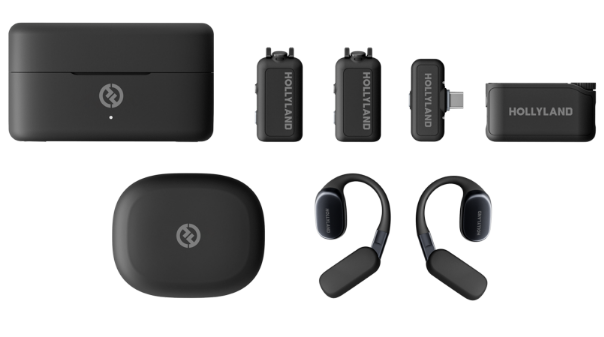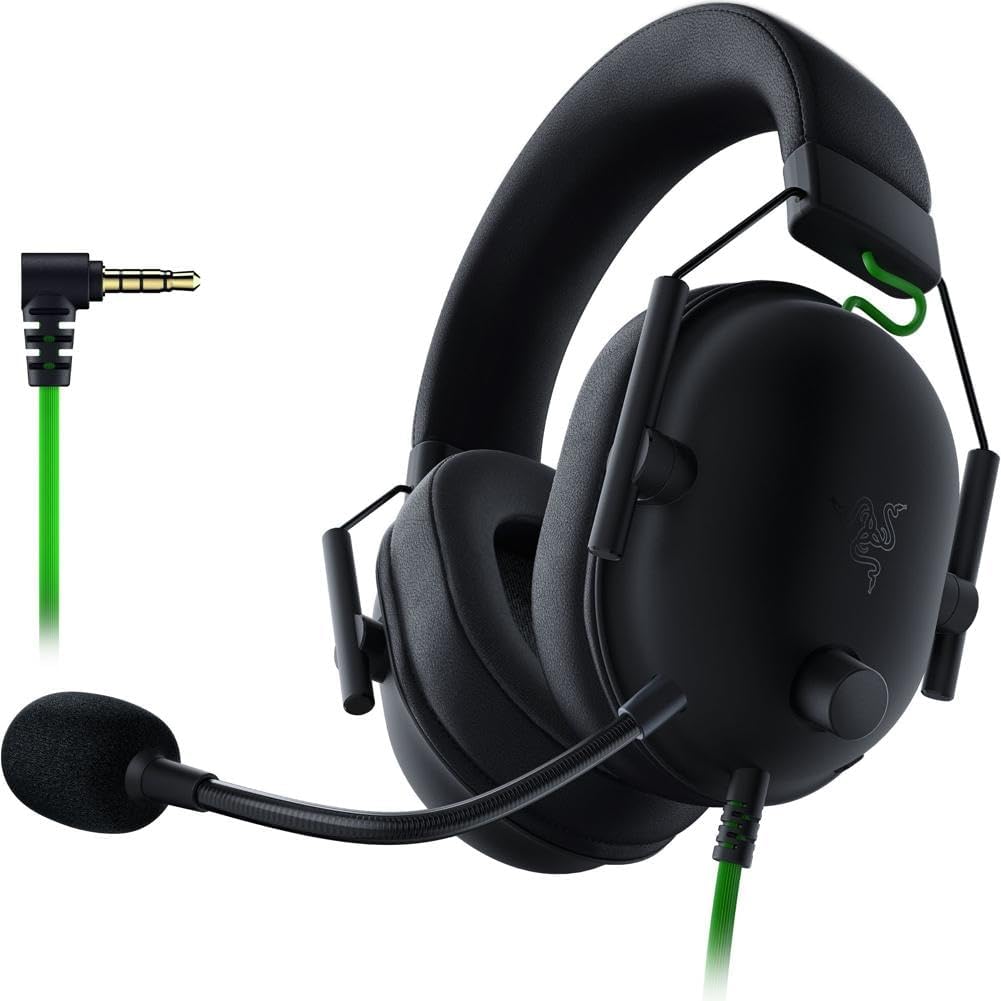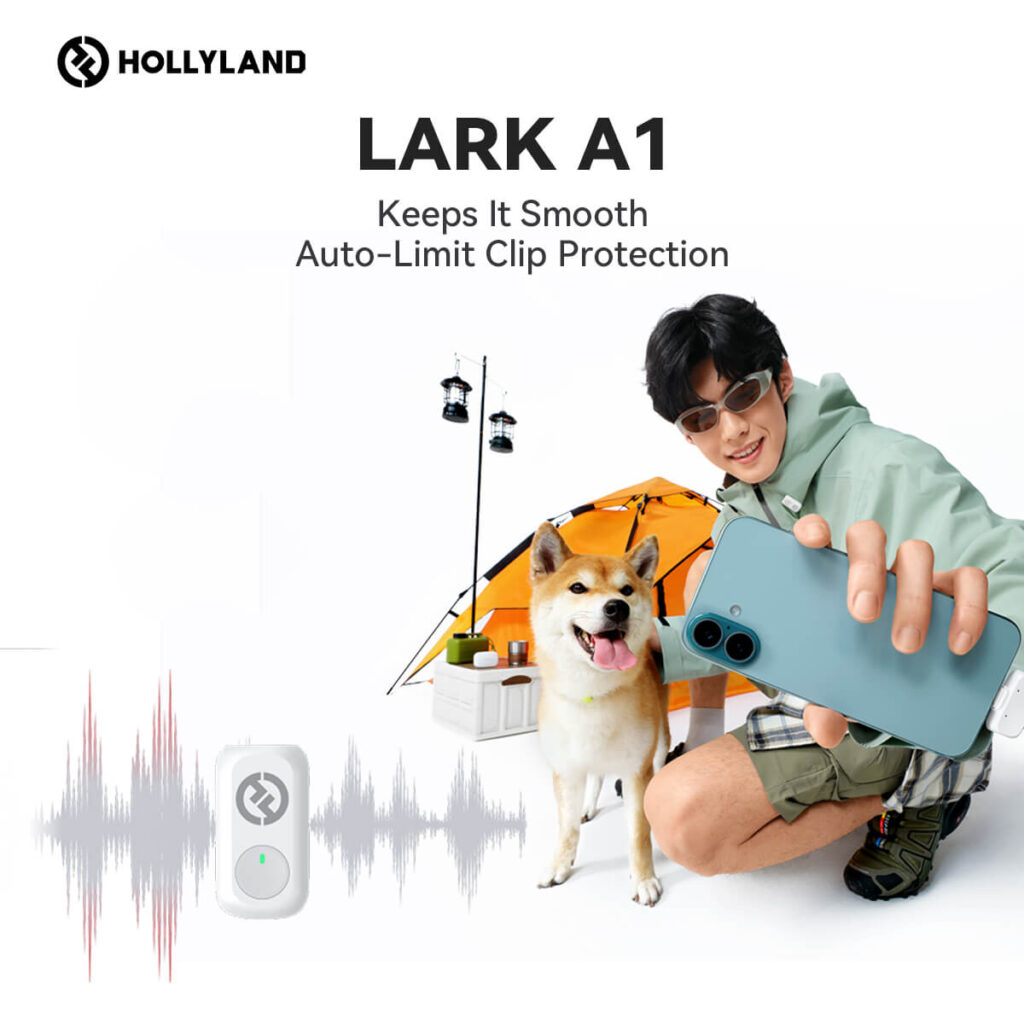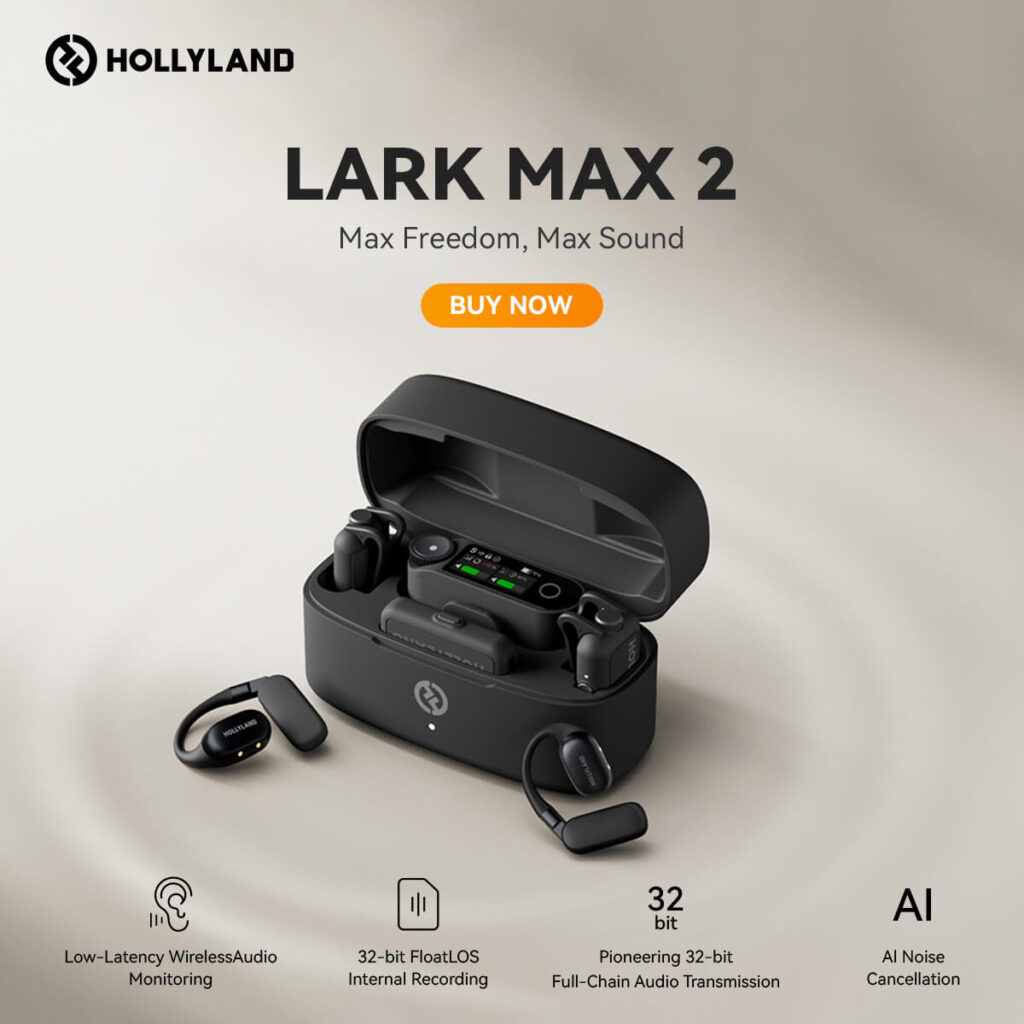Welcome to the quest for impeccable clarity and richness in your audiobook recordings! The right USB microphone can elevate your storytelling to enchanting new heights by delivering professional-grade audio quality directly to your listeners’ ears. Choosing the perfect mic can be daunting, but fret not—we’ve tailored a listicle of the finest options available, specifically with audiobook recording in mind. Whether you’re an emerging narrator or a seasoned voice-over artist, these mics promise to bring out the full timbre and emotion of your vocal performance. Now, let’s unveil the best USB microphones that will turn your narrations into auditory masterpieces.
When selecting the best USB microphone for audiobook recording, it’s important to consider various factors that contribute to high-quality sound and ease of use. Here are key criteria to guide your selection:
- Audio Quality: Look for microphones with clear, natural sound reproduction. A mic with a wide frequency range can more accurately capture the nuances of the human voice.
- Polar Patterns: Cardioid mics, which pick up sound primarily from the front, are ideal for voice recording as they minimize background noise.
- Ease of Use: USB microphones that are plug-and-play, requiring no additional drivers, make setup effortless.
- Build Quality: A well-constructed microphone will not only last longer but may also have better sound isolation.
- Additional Features: Features such as a headphone jack for real-time monitoring, on-mic gain control, and mute button contribute to a more controlled recording environment.
- Compatibility: Ensure the microphone is compatible with your recording setup, be it a PC, Mac, or other devices.
- Price: While not a direct indicator of quality, finding the right balance between cost and features is crucial for value.
By keeping these factors in mind, you’ll be better equipped to choose a microphone that delivers professional audio quality for your audiobook recordings.
| Product | Price (Approx.) | Polar Pattern | Frequency Response | Sample Rate | Bit Depth | Connectivity | Additional Features |
|---|---|---|---|---|---|---|---|
| Audio-Technica AT2020USB+ | $150 | Cardioid | 20Hz – 20kHz | 44.1/48 kHz | 16 bit | USB | Mix control, Headphone jack with volume control |
| Blue Yeti USB Microphone | $130 | Multi-pattern | 20Hz – 20kHz | 48 kHz | 16 bit | USB | Gain control, Mute button, Zero-latency headphone output |
| Rode NT-USB | $170 | Cardioid | 20Hz – 20kHz | 48 kHz | 16 bit | USB | Pop shield, Tripod desk stand, Ring mount, Storage pouch |
| Shure MV5 Digital Condenser | $100 | Cardioid | 20Hz – 20kHz | 44.1/48 kHz | 24 bit | USB, Lightning | DSP preset modes, Built-in headphone output for real-time monitoring |
| Samson G-Track Pro | $150 | Multi-pattern | 50Hz – 20kHz | Up to 96 kHz | 24 bit | USB | Dual 1″ (25mm) condenser capsules, Integrated mixer |
Please note that the prices listed are approximate and subject to change depending on the retailer and location. Moreover, additional features have been summarized, and some less crucial for audiobook recording have been omitted for clarity.
This table should provide a clear comparison of the different USB microphones regarding their price and key specs. From this, you can narrow down which product best suits your audiobook recording needs based on the features that are most important to you, such as sound quality or additional functionalities.
Audio-Technica AT2020USB+ USB Microphone

Overview
The Audio-Technica AT2020USB+ is a phenomenal choice for anyone venturing into the world of audiobook recording. Right out of the box, its sleek design and robust build quality stand out. It’s designed specifically for digitally capturing music or any acoustic audio source using your favorite recording software. What I appreciate the most about the AT2020USB+ is the ease of use that it brings to the table. Just plug it into your computer’s USB port, set it as your input device, and you’re ready to start recording.
Its clear and accurate sound reproduction is thanks to the quality condenser capsule that Audio-Technica is known for. This microphone captures the subtleties of the human voice exceptionally well, making it ideal for narrators who demand clarity and detail in their audiobook productions. I’ve found that the cardioid pickup pattern also does a remarkable job at minimizing background noise, allowing the focus to stay on the narrator’s voice.
Additionally, the inclusion of a built-in headphone jack with volume control allows for real-time monitoring without any noticeable delay, which is crucial when recording long passages. There’s a neat mix control that lets you blend your microphone signal with pre-recorded audio, making the AT2020USB+ especially versatile for more advanced production setups.
Specs
- Element: Condenser
- Polar Pattern: Cardioid
- Frequency Response: 20Hz – 20kHz
- Power Requirements: USB Power (5V DC)
- Bit Depth: 16 bit
- Sample Rate: 44.1/48 kHz
- Volume Control: Mix control; Headphone volume control
- Output Connector: USB-type
Pros:
- Outstanding sound quality with precise audio capture.
- Simple plug-and-play setup which is fantastic for beginners and pros alike.
- Direct monitoring via headphones is a game-changer for error-free recording.
- The cardioid polar pattern reduces the pickup of unwanted sounds.
Cons:
- Limited to 16-bit depth which might not satisfy those looking for higher resolution audio.
- The mic stand included is functional, but it may require a shock mount for better stability and vibration reduction.
Price
The Audio-Technica AT2020USB+ comes at a price that reflects its premium quality, usually retailing around $150. Given its features, the price is justifiable for serious audiobook narrators who need reliability and professional-level audio. However, for hobbyists or those just starting, this might feel like a steep investment. Nevertheless, for a microphone that can serve you well beyond just audiobook recording, it is a worthwhile purchase. Remember that prices may vary depending on the retailer and any ongoing sales or discounts.
In summary, the Audio-Technica AT2020USB+ packs a punch with its professional quality and user-friendly features. It’s a splendid microphone for recording audiobooks, podcasting, or any other professional vocal work, offering high-quality audio in a simple setup. If you’re aspiring to produce crystal-clear audio for your listeners, this microphone certainly won’t disappoint.
Blue Yeti USB Microphone
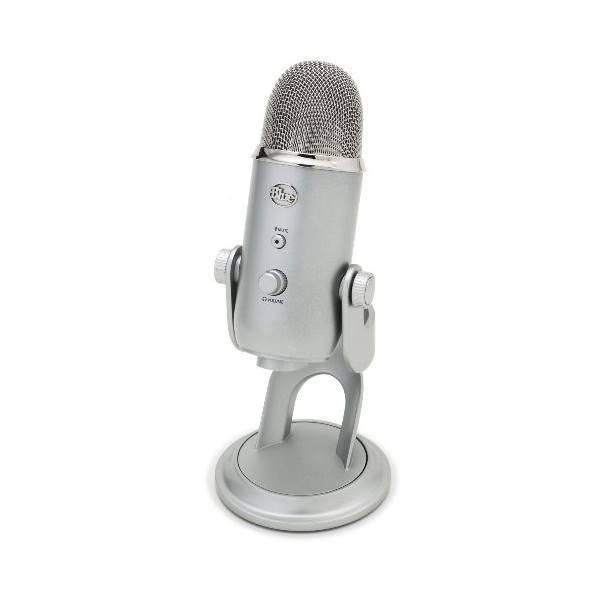
Overview
The Blue Yeti USB microphone is a fan favorite for a reason, and in the realm of recording audiobooks, it certainly packs a punch. This versatile microphone is almost deceptively simple in its setup, but don’t let its ease of use fool you — it delivers quality that could rival some of the more complicated rigs out there. With the Blue Yeti, you’re getting a mic that not only captures the full richness and depth of your voice but does so with a level of clarity that can elevate any audiobook recording to professional standards.
Its plug-and-play functionality is a game-changer for narrators of all skill levels, making it possible to focus more on performance and less on technical troubleshooting. Whether you’re tucked away in a cozy home studio or find yourself recording in various locations, the Yeti adapts to your environment with its multiple pattern settings — a feature that I’ve found invaluable.
And let’s talk about its physical presence. The design is both retro and modern, giving it a classic feel that looks great on camera for any potential video podcasting. It’s sturdy and has a heft to it that reassures you of its quality the moment you take it out of the box.
Specs
- Multiple Polar Patterns: Cardioid, Bidirectional, Omnidirectional, and Stereo
- Frequency Response: 20Hz – 20kHz
- Sample Rate: 48kHz
- Bit Rate: 16-bit
- Zero-Latency Monitoring
- User-friendly controls for headphone volume, pattern selection, instant mute, and microphone gain
- Adjustable stand and threaded bottom for easy mounting
Pros:
- The multi-pattern versatility is great for finding the perfect setting to capture your voice.
- The zero-latency headphone output is a major plus for real-time monitoring.
- Solid construction and build mean this microphone is a long-term investment.
- Simple USB connectivity paired with no need for extra gear makes it ideal for newcomers.
Cons:
- It’s on the larger side, which might not be ideal for minimalist or cramped recording spaces.
- The gain control can be sensitive, requiring a bit of finesse to find the sweet spot without peaking.
Price
The price of the Blue Yeti USB Microphone tends to hover around the mid-range and is often justified by the build and sound quality that comes with the brand. Keep an eye out for bundles or discounts that pop up, particularly around holidays or special events.
In conclusion, the Blue Yeti USB Microphone certainly earns its place on any list of top microphones for audiobook recording, thanks to its rich sound quality, ease of use, and robust build. It’s a standout plug-and-play solution that demands little technical know-how but delivers the kind of audio fidelity that could please even the most discerning of ears. Whether you’re just starting in audiobook narration or looking to upgrade your current setup, the Yeti is worth considering.
Rode NT-USB USB Microphone
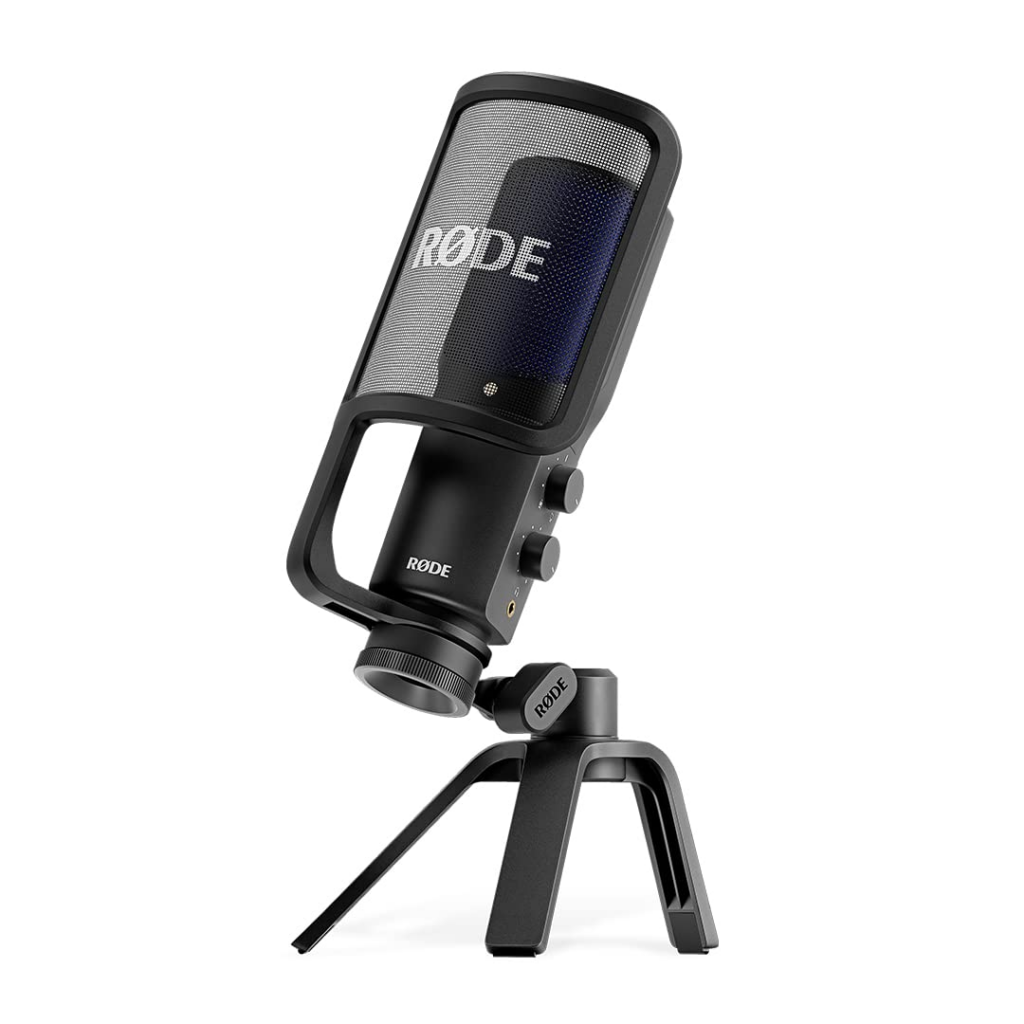
Overview
If you’re venturing into the world of audiobook recording and are seeking an effective and professional-sounding microphone without the complexity of an XLR setup, the Rode NT-USB is an outstanding choice. This mic, which has quickly become favored in the podcasting and voice-over communities, offers a smooth, clear sound profile that’s essential for capturing the nuances of spoken word audio.
From my experience using this microphone, I’ve found it to be supremely user-friendly — it’s practically plug-and-play with most operating systems. But don’t let its simplicity fool you; the NT-USB packs a punch where it counts. Its cardioid pickup pattern does an excellent job of isolating your voice from unwanted background noises, which is crucial when recording audiobooks. Plus, the inclusion of a zero-latency headphone jack on the microphone itself allows for real-time monitoring, ensuring that you can hear exactly what you’re recording without delay.
The build quality also deserves praise; the Rode NT-USB feels solid and reliable, and the pop shield provided in the box is a nice touch that many other microphones omit. All these features come together to create a microphone that not only looks professional but sounds the part too.
Specs
- Acoustic Principle: Pressure gradient
- Active Electronics: JFET impedance converter with bipolar output buffer, A/D converter 16bit 48kHz
- Polar Pattern: Cardioid
- Frequency Range: 20Hz – 20kHz
- Output Connection: USB – simultaneous I/O Mono output with zero latency
- Included Accessories: Tripod desk stand, pop shield, ring mount, storage pouch, and USB cable
- Compatibility: Windows and macOS without additional drivers
- Additional Features: Mix control, 3.5mm headphone jack for zero-latency monitoring
Pros:
- Excellent sound quality for voice work, especially spoken word
- Very user-friendly, compatible with most operating systems without extra drivers
- Built-in pop shield and headphone jack for convenience and monitoring
- Durable construction feels more premium than other USB microphones in this price range
Cons:
- More expensive than some entry-level USB microphones, which might be off-putting for beginners
- While versatile, it’s optimized for voice, which means it may not be the best choice for multi-purpose recording needs
- Some might want more onboard controls for sound adjustment
Price
The Rode NT-USB tends to be on the higher end of mid-range USB microphones. Prices vary depending on the retailer, but you can generally expect to pay around $170 to $200 for this microphone. Nevertheless, considering the quality and features you’re getting, I find it to be worth the investment, especially if you’re serious about producing professional-grade audiobooks.
Shure MV5 Digital Condenser Microphone
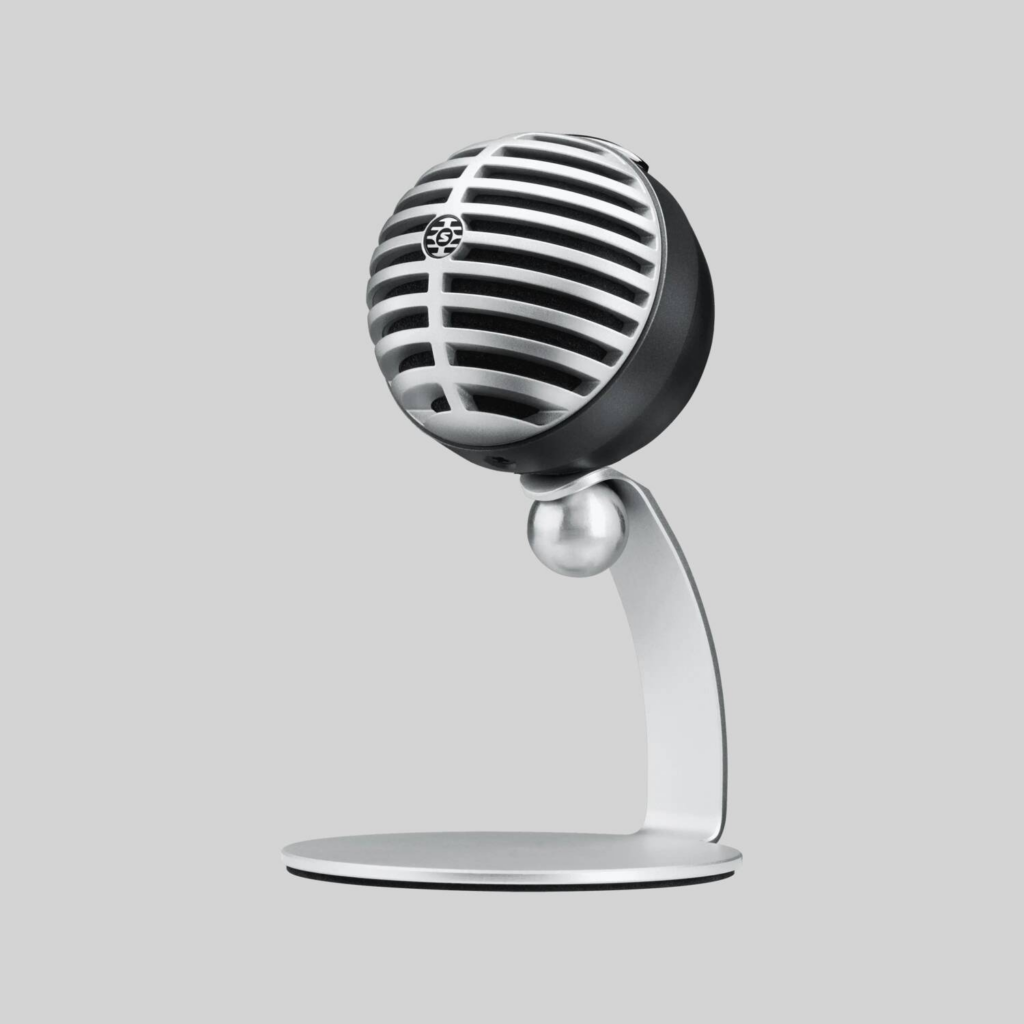
Overview
The Shure MV5 Digital Condenser Microphone strikes a fine balance between professional-grade audio recording and user-friendliness, making it an excellent choice for audiobook narrators who are looking for quality without the complexity. I’ve personally found that its design and performance deliver more than what you’d expect from its modest footprint. One standout feature is the MV5’s custom-tuned microphone capsule, which does a stellar job of capturing the spoken word with clarity and depth. When recording audiobooks, the richness and nuance of the human voice are paramount, and the MV5 ensures that your recordings will sound crisp and professional.
The microphone comes with a detachable desktop stand and is also very portable, making it easy to take your audiobook recording setup on the go. It’s compatible with a variety of devices, thanks to its USB and Lightning connectivity, which means you can easily switch between your computer and iOS devices without any hassle. Shure’s reputation for building sturdy, reliable gear is reflected in the MV5’s construction, which feels robust despite its compact size.
Specs
- Microphone Type: Condenser
- Pickup Patterns: Cardioid
- Connection Type: USB, Lightning
- Frequency Response: 20Hz to 20kHz
- Built-in Headphone Jack: Yes
- Onboard DSP: Yes, with presets for voice and instruments
- Size and Weight: Small, lightweight, and with a detachable stand for easy portability
Pros:
- Exceptional audio quality for the spoken word, capturing the nuances of narration beautifully.
- Plug-and-play usability, which simplifies the recording process for non-tech savvy users.
- The included presets allow for quick settings adjustments to suit the recording environment or vocal style.
- Compact and portable design with a sturdy build that withstands regular use.
Cons:
- The small size may not be as impressive on a professional studio desk, for those who care about aesthetics.
- It doesn’t have the same range of adjustability and positioning as some larger microphones.
- The included stand, while convenient, is not as stable as a full-size mic stand.
Price
Priced at around $100, the Shure MV5 presents a great value proposition. It’s less expensive than some of the higher-end USB microphones while still delivering a level of audio fidelity that will meet the discerning standards of audiobook production. It’s an investment in your audiobook recording setup that won’t break the bank but will noticeably elevate the quality of your recordings.
In conclusion, the Shure MV5 is an impressive ally in the world of audiobook recording. Its ease of use, high-quality recordings, and portable design make it a sensible choice for narrators, whether they’re just starting or looking to streamline their existing setup. With its competitive pricing, the MV5 is a microphone that provides professional-grade results without the intimidating complexity or cost of more elaborate studio equipment.
Samson G-Track Pro USB Microphone

Overview
The Samson G-Track Pro is a well-crafted piece of equipment that stands out in the crowded market of USB microphones, mainly because of its versatility and professional sound quality. It’s excellent for audiobook recording due to its warm tonal quality and the ability to capture the nuances in voiceover work. The design feels robust and can give some pricier studio microphones a run for their money in terms of durability and performance.
When you first use the G-Track Pro, you notice how it makes the recording process quite streamlined. The mic features a built-in audio interface, which means you can record directly to your computer without needing additional hardware. This is super handy for voice actors or authors who are eager to get their audiobook recordings done efficiently and with minimal fuss.
The multi-pattern pickup capabilities (cardioid, bidirectional, and omnidirectional) offer flexibility depending on your recording environment or if you decide to switch things up and have more than one person speaking. Furthermore, the onboard controls for volume, gain, and mute give you practical hands-on management over the recording process, so you can make adjustments on the fly without needing to dive into your computer’s settings.
Specs
- Polar Patterns: Cardioid, Bidirectional, Omnidirectional
- Frequency Response: 50Hz-20kHz
- Sample Rate: Up to 24-bit/96kHz
- Controls: Mute button, Microphone Gain, Instrument Gain, Headphone Volume
- Connectivity: USB
- Build: Die-cast zinc construction with a heavy gauge mesh grille
Pros:
- The versatile pickup patterns make it suitable for a variety of recording scenarios.
- High-quality audio interface built-in is excellent for direct recording.
- Solid build quality ensures durability for daily use.
- High-resolution audio support of up to 24-bit/96kHz is a boon for audiobook clarity.
Cons:
- It’s relatively bulky, which might not suit all home studio setups.
- Does not come with a pop filter, which you’ll need to reduce plosive sounds during speech recording.
Price
The Samson G-Track Pro typically retails for around $130 to $150 USD. Considering its features and performance, this is a reasonable price for anyone serious about producing high-quality audiobook recordings without investing in a full studio setup.
In my opinion, the Samson G-Track Pro strikes an exceptional balance between professional-level recording capabilities and user-friendliness for non-tech-savvy individuals. The robust build guarantees longevity, while the array of on-mic controls and recording patterns cater to most, if not all, home recording needs you might come across when creating an audiobook. The price reflects the quality you get, and for anyone investing in their audiobook recording journey, this microphone is a wise choice.
Conclusion:
In summary, when it comes to recording audiobooks, the right USB microphone can drastically enhance the listener’s experience. Each of the mics we’ve explored today offers a blend of clarity, ease of use, and affordability, catering to both novice narrators and seasoned voice-over artists. Remember, the best USB microphone for you will balance sound quality with your specific needs and budget. With any of the top picks on our list, you’re well-equipped to bring stories to life and captivate your audience with crystal-clear audio narration.
While USB microphones are great for audiobook recording at your desk, sometimes you may want greater flexibility or freedom of movement while speaking. A wireless lavalier microphone can complement your studio setup, letting you record crisp, clear audio hands-free and comfortably – even if you prefer to stand or move around during narration.
Best Seller
Sale
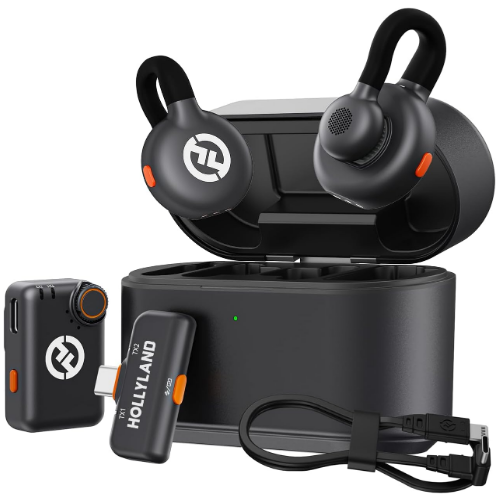
Hollyland LARK M2S – Wireless Clip-on Microphone
- 7g Lightweight, Titanium Clip, Discreet Design
- Clear sound with 24-bit/48kHz, 70dB SNR, 116dB SPL
- Noise Cancellation & 300m Long-Range Stability
- Works with Camera/iPhone/Android/Laptop
- Perfect for Content Creators, Online-Teaching, Streaming
$139
$159
FAQs:
Q1: What are the key features to look for in a USB microphone for audiobook recording?
A1: Key features include audio quality, a cardioid pickup pattern to reduce background noise, a stable stand or shock mount, pop filters for plosive sounds, and a bit rate/sample rate that ensures high-quality recording.
Q2: Is it necessary to have a professional recording environment when using a USB microphone?
A2: While it’s not strictly necessary, recording in a quiet, dampened space can dramatically improve the sound quality of your audiobook recordings by minimizing echo and background noise.
Q3: Can I use a USB microphone with any computer for audiobook recording?
A3: Most USB microphones are plug-and-play devices, meaning they are compatible with both Windows and Mac computers without the need for additional drivers or software. Just make sure your computer has a standard USB port.

















